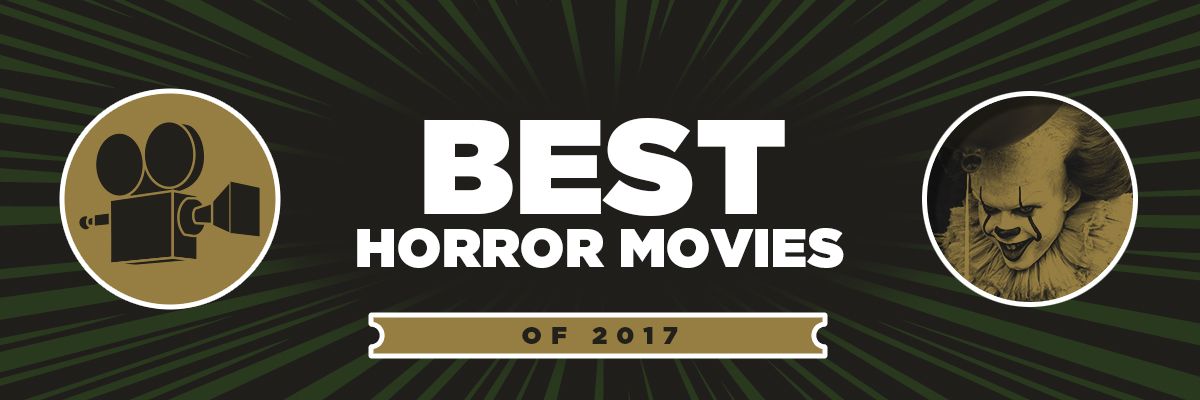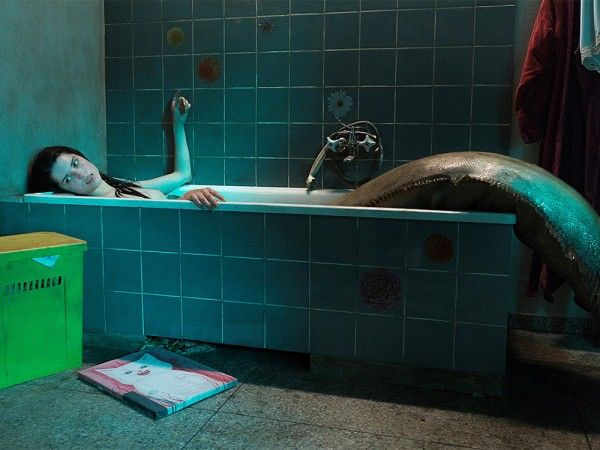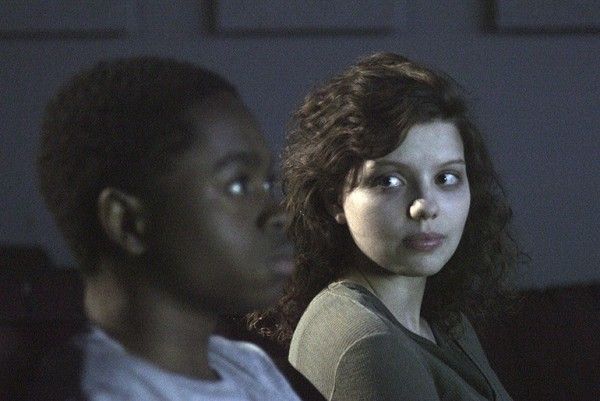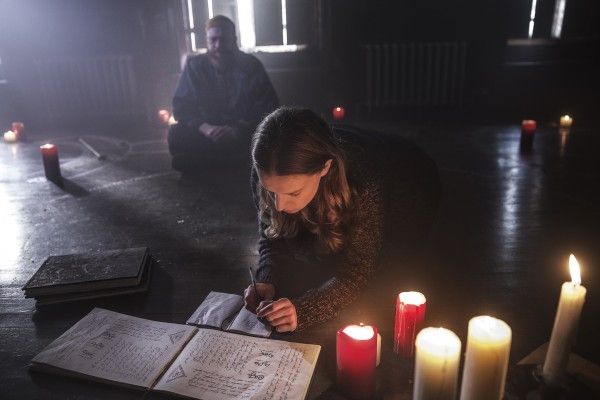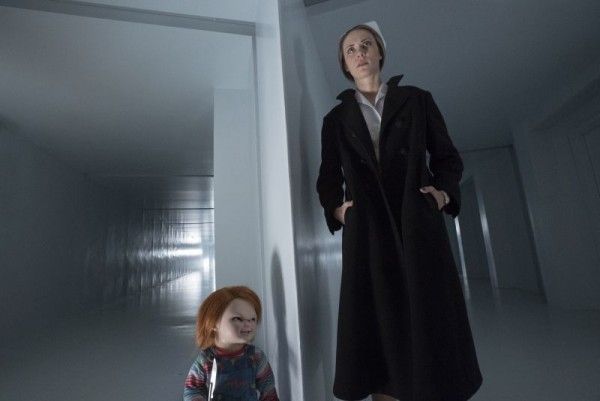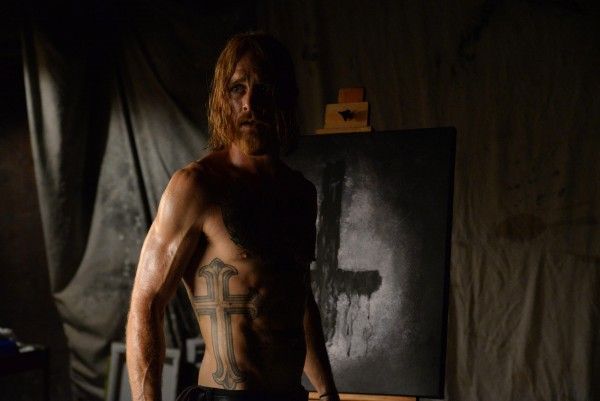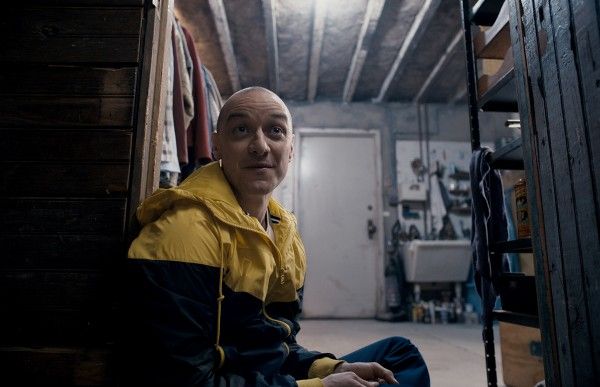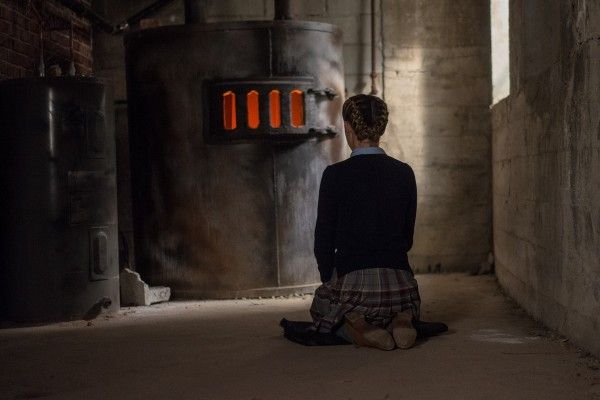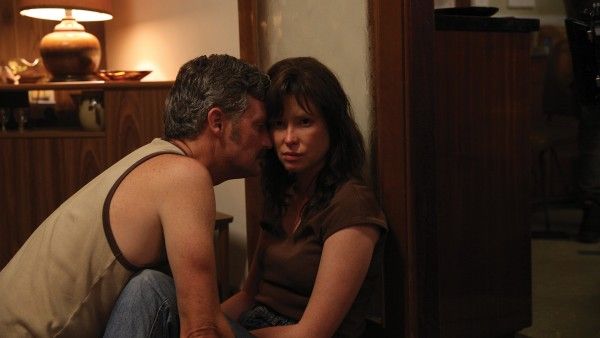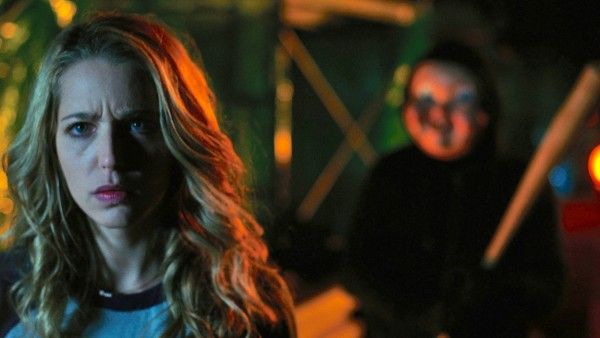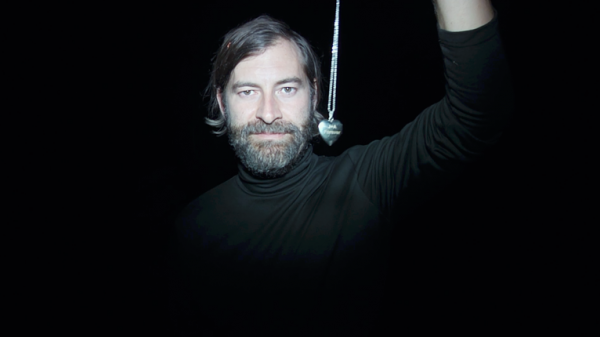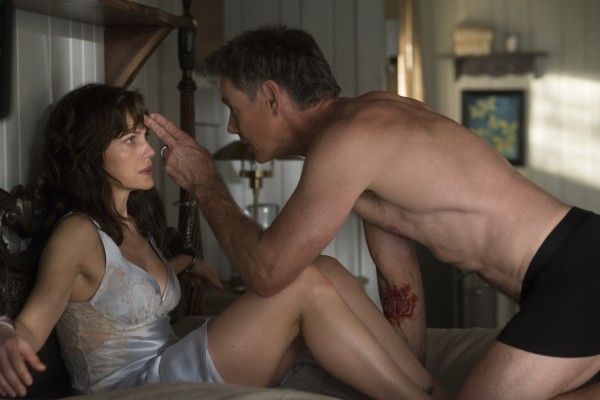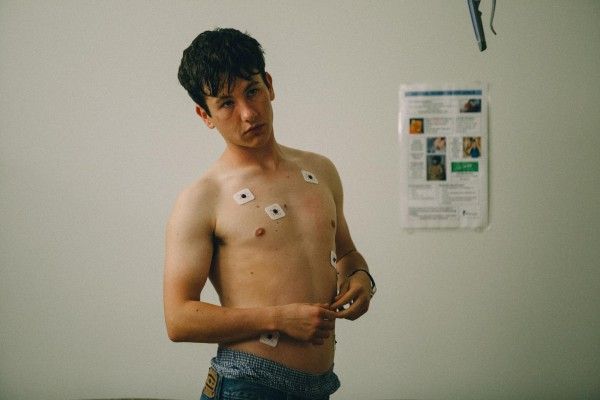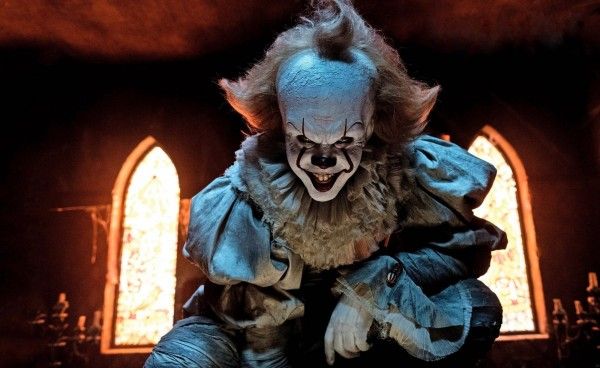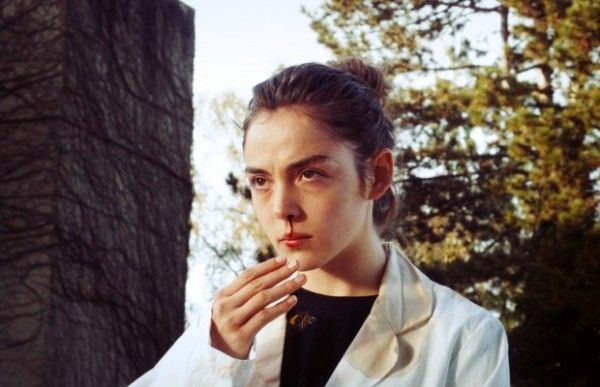No matter which way you slice it, 2017 has been a phenomenal year for horror movies. There's always bound to be a big box office horror hit or two in any given year, but largely thanks to the unprecedented success of Andy Muschietti's IT, 2017 trampled previous records to become the biggest year for horror in movie history. Numbers aside, horror films have thrived with critics in 2017, and the critical darling of them all, Jordan Peele's lauded Get Out, is poised to make it all the way to the Oscars -- an incredibly rare feat for any horror film, not to mention one that hit theaters way back in February. And that's just the big name stuff. VOD, Netflix, all other manner of non-traditional release platforms offered up an even greater number of outstanding films for the genre enthusiast.
As you might guess, in a year so rich with horror content, and good stuff at that, it was super challenging to cut this list down to fifteen entries and a lot of great films ended up on the cutting room floor, and there's a few in particular I'd like to single out.
There's Tragedy Girls, the stylish and self-aware tale of teen friendship (and murder); The Lure, the Polish mermaid musical that veers more toward fantasy than horror despite the occasional violent flourish; Prevenge, Alice Lowe's twisted slasher comedy about grief and motherhood; 1922, another fantastic Stephen King adaptation from the year of King; Super Dark Times, a fantastic horror-tinged spin on the coming-of-age drama that fuses murder, frienship, and teenage lusty longings; The XX, an anthology of mostly excellent short films from female horror directors; 47 Meters Down, a simple but effective shark survival horror; The Void, which never surpasses its fantastic creature effects to become something more; Annabelle: Creation, which never surpasses its thrilling house of horror jump scares to become something more; and of course, Alien: Covenant, Ridley Scott's divisive, sloppy, and brilliant bit of existential terrors and sci-fi camp. If I had 10 more spots on this list, these would be the films that got 'em.
Before we get to the actual list, let's get this out of the way: I'm just not a mother! person. I already went to bible school and I didn't like it the first time either. Your mileage may vary.
In keeping with last year's list, I've skipped the ranking. It just seems silly with so many disparate but wonderful kinds of horror on display. How do you compare Happy Death Day with The Killing of a Sacred Deer? How do you compare The Killing of a Sacred Deer with anything, really? With that in mind, check out my picks for the 15 best horror movies of 2017 below and be sure to sound off in the comments with your favorites.
The Transfiguration
The Transfiguration is either a vampire film or a serial killer movie and the fact that you never quite know which one is what makes it so hard to shake. The film certainly points to the grimmer, less fantastical reality but writer/director Michael O’Shea never calls it a case closed for the audience. Either way, The Transfiguration is a riveting, visceral portrait of a young boy enthralled by murderous impulses he can’t or won’t control.
Proudly and openly pulling from the tradition of films like Martin and Let the Right One In, The Transfiguration abandons the vampire mystique in favor of a subdued character study. Milo is the maybe-vampire in question, a schoolboy stuck in a desolate, lonely routine. He lives with his PTSD-afflicted brother in a Brooklyn housing project, grieving his mother’s suicide and bullied by the local gangbangers. He’s also a killer. Once a month, Milo sneaks out by night, hunts a victim, and drinks their blood. The Transfiguration is deliberate and sustained, and O’Shea executes his moments of startling brutality with tactical precision, luring you into empathy for Milo before confronting you with an unflinching portrait of his capacity for violence. Ultimately, The Transfiguration is a classic vampire film — that of a soul stuck between salvation and damnation — but it’s inlaid with the cultural commentary and character excavation that places it among the best of its kind.
A Dark Song
Tightly-wound and intricately paced, A Dark Song is a tale of grief and forgiveness told in the confines of one hellish magic ritual. The film stars Catherine Walker as Sophia, a woman stuck in the pits of vengeance-fuelled grief after the murder of her son. Desperate and furious, she hires Joseph Soloman (Steve Oram), a bad-tempered occultist with a spotty track record to perform a dangerous and demanding incantation that will grant them both anyone wish if it goes right, but will cost them their souls if it goes wrong.
Writer-director Liam Gavin imagines magic as painful, rigorous, and intricate. The mismatched duo seal themselves in a remote house for the six-month ritual, which will very literally demand their blood, sweat, and tears among other feats of sacrifice and determination. At least for Sophia, who is tested endlessly while Soloman shouts curt orders and reprimands at her. The power dynamics at play between them, and they way they come to both despise and depend on each other in the midst of the maddening spiritual journey, make the bulk of the film a fascinating subversion of occult thrillers, and while your mileage may vary on the far-out ending, it cements A Dark Song as one of the most original and unpredictable horror films in recent memory.
Cult of Chucky
They may not have the cultural cache of some of the other slasher greats, but the Child’s Play films have endured over the decades, resistant to remakes and reboots, consistently evolving in fun, fearless ways. The latest direct-to-video entry doesn’t have the big-budget polish of the theatrical release days, but it has franchise shepherd Don Mancini's cheeky charm in spades. Cult of Chucky catches up with Curse of Chucky’s Nica (Fiona Dourif), who’s locked up in an insane asylum where nobody believes her stories about a killer doll named Chucky. When her fellow inmates start turning up dead, Cult of Chucky bends the line between reality and delusion as multiple Good Guy dolls make their way into the facility, temping Nica to question her own sanity. Mancini directs as well as writes, expanding the visual language of the Chucky films in fun ways that harken back to the tradition of asylum horror and, as always, Brad Dourif makes a meal out voicing the foul-mouthed little serial killer. Cult of Chucky is funny, with some of the franchise’s best kills, and in a time when sequels seem too often content to repeat what comes before, Cult of Chucky’s ending blows the doors open for the possibilities of what’s to come next.
The Devil's Candy
After making his stunning feature debut with his ferociously fucked up 2009 film The Loved Ones, Sean Byrne finally deliverd his directorial follow up with this year’s entrancing satanist serial killer yarn, The Devil’s Candy. The set-up is simple; a tight-knit family moves into a country home for a steal, but the realtor fails to warn them that their beautiful new house comes at a bargain because it was the scene of a horrifying murder. It’s classic horror movie stuff, but Byrne elevates the material with heavy metal heart, giving us a family we actually root for and painting their descent into a hellish nightmare with a grungy palette of doom.
Split
I hope you saw this one in a crowded theater full of people who love movies, because listening to the audience meltdown at the film's final scene (and maybe doing a little shocked shouting of your own), is a highlight moviegoing experience. While Split‘s ending is the stuff of legend, it's not exactly a twist in the way we've come to expect from M. Night Shyamalan, and most importantly, it's not the ending that makes Split work. The rest of the film is damn delightful in its own right.
Split follows a trio of young women who are kidnapped by a man with Dissociative Identity Disorder (aka split personalities), who is host to 23 different identities. We don’t meet them all, but we meet quite a few, and James McAvoy dives into camp territory with relish, delivering a fantastic and consummately entertaining performance as Dennis and Patricia and Hedwig, and his other various inhabitants, all of whom he embodies with flair and scenery-chewing charm. A blast of a B-movie with studio sheen, Split has a refreshing current of empathy for its characters, including McAvoy’s villain, emparting the message that trauma evolves the survivor into a person of great strength and resillience. Fun, surprising, and cleverly tied into Shyamalan's previous work, I can't wait to see what the filmmaker does with this world of horrors and heroes next.
The Blackcoat's Daughter
The directorial debut from Oz Perkins (though his sophomore feature I Am the Pretty Thing that Lives in the House was released first), The Blackcoat’s Daughter is a searing, bleak tale of Satanism and murder set against stunning snowy backdrops that seem to muffle each burst of terror in a suppressed, anguished scream. And when the sound finally breaks through in the film’s final moments, it’s a piercing cry of the damned.
Set across two overlapping narratives, the film stars Mad Men’s Kiernan Shipka and Sing Street breakout Lucy Boynton as two young women stuck at their boarding school during winter break who come up against an evil presence, and Emma Roberts as a young woman desperately trying to make her way back to the school. You realize where their stories intersect pretty quickly and the super slow burn narrative may isolate some viewers, but if you can stick with it, The Blackcoat’s Daughter delivers an atmospheric pressure cooker that boils over in a chilling, deeply effective finale that seems to linger endlessly in the back of your mind.
Hounds of Love
Australian filmmakers have carved out a gruesome niche in horror as the destination for bleak, ghastly, and all too human horrors. In the tradition of Wolf Creek and Snowtown—hell, it was even a pair of Aussies that gave us the first Saw film—Hounds of Love delivers an unflinching look at violence through the sparsest lens, with nary a narrative contrivance to distract from the soul-crushing damage inflicted on screen. The film stars Emma Booth and Stephen Curry as a pair of merciless serial killers so ordinary they could be your next door neighbors. When they capture a new girl (Ashleigh Cummings) to torment until she reaches her expiration date, they get more than they bargained for as the clever teen drives a wedge in their toxic relationship. Hounds of Love never flinches from the extremes of human depravity, but debut filmmaker Ben Young makes it bearable by knowing when to look away and always treating the victim with utmost respect. Hounds of Love is a gruelling, devastating film and the horrors hit far too close to home because we see their ilk on the evening news ever day.
Happy Death Day
A good PG-13 horror movie is a rare bird, and Christopher Landon’s slasher movie by way of Groundhog’s Day is easily one of the best. Happy Death Day stars Jessica Rothe as Tree (a very stupid name for such a smart movie), a self-obsessed sorority girl who finds herself trapped in a personal hell where she is forced to relive the day of her murder over and over, stumbling into a new horrible death with each repeat, until she can discover the identity of her killer. It’s a sharp concept and the script follows through with keen knowledge of the genre and a series of well laid set-ups that payoff beautifully, but it’s really Rothe’s commanding, darkly hilarious turn as our prickly, flippant final girl that makes the movie such a damn delight to watch. Slick and smart with a star-making turn from Rothe, Happy Death Day delivers even if it never goes for the gore.
It Comes at Night
It Comes at Night is not a monster movie. It’s not interested in world-building. It’s not interested in easy answers. But that doesn’t mean it’s not a horror movie, and startlingly effective one if you can buy into the film itself instead of the movie the marketing campaign sold you. Set in a threadbare post-apocalypse ravaged by a deadly disease, It Comes at Night follows a family festering in a psychological pit of grief and survivalism when a man in search of water for his wife and child breaks into their safeguarded home and sets their already precarious balance on edge. The threat of death and endless fear lingers over the whole affair with oppressive heaviness and writer-director Trey Edward Shults leans into the horror of human weakness via a lean allegory for the endless cycles of violence we inflict on each other in the name of protecting our own tribe. We’ve seen this all done before—it’s the root of horror classics like Night of the Living Dead and The Thing—but Shults strips the concept down to its bare parts, swapping fantastical effects and creature creations for a faceless all-consuming dread.
Creep 2
Patrick Brice and Mark Duplass team again for another sociopath surprise with Creep 2, which sees the return of Duplass’ disarming serial killer who likes to form friendships with his victims before he sends them to his grave. The thrills and scares in Creep were born out of the utter uncertainty of what Josef—who adopts the name Aaron in the sequel—would do next. Of course, now that we know what he’s up to, how could a sequel deliver the same level of unnerving intrigue?
Wisely, it doesn’t try. Instead, Brice and Duplass script new kinds of comedy and tension, finding Aaron at a point in his life when he’s lost his urge to kill. Rudderless without his life's great passion, he invites Desiree Akhavan’s videographer Sara to his home where a fascinating dance of empathy and miscommunication follows. He tells her everything about his dark misdeeds and she doesn’t believe a word of it, leading the two “artists” try to help each other back to inspiration; a unique dynamic played to a tee by Duplass and Akhavan, who matches his unsettling charm with an unflappable charisma of her own. It’s not as scary as the first film, but it’s an improvement in every other way, digging deep into Brice and Duplass’ deeply creepy creation and investigating what makes him tick.
Gerald's Game
Gerald’s Game was long considered Stephen King’s most unadaptable book—not because the visions or concepts were too fantastical or far-reaching to capture on film, but because of the source material’s sparse simplicity. Set almost entirely within the confines of a single room, Gerald’s Game follows Jessie (Carla Gugino) on a still and silent fight for survival when she ends up handcuffed to a bed, alone and out of earshot, after her husband (Bruce Greenwood) drops dead during his favorite sex game. Writer/director Mike Flanagan, who developed the film for years as a passion project, works wonders translating Jessie’s internal journey into a cinematic experience, and Gugino delivers the best work of her career, meeting every scripted challenge with a singular combination of fragility and strength.
Rooted in themes of trauma and abuse, Gerald’s Game matches its horrors (including the most cringe-worthy effect of 2017) with a beautiful, healing story about the journey from victim to survivor and the power of self-realization. It’s a stunning and faithful adaptation of King’s work, something that seemed impossible on paper, and it’s by far the most mature, captivating work of Flannagan’s career so far.
The Killing of a Sacred Deer
I’ll admit, I was a good way into The Killing of a Sacred Deer, thinking to myself, “This isn’t a horror movie.” I was wrong. About halfway through, Yorgos Lanthimos’ finely tuned discomfort and dread boils over into a mythic, haunting fever dream of punishment and perversity. Killing of a Sacred Deer starts with a needling presence, scratching and probing in intensely uncomfortable ways, and before you know it, the film becomes a full-on opiate drip, lodged deep, that transforms Lanthimos’ signature surreality into a nightmarescape that feels too real and too intimate.
Colin Farell and Nicole Kidman do great work as a chilly, affluent couple faced with an impossibly upsetting predicament, but it’s newcomer Barry Keoghan (who also appeared in this year’s Dunkirk) who will make you squirm in your seat with a bravura embrace of the weird. Never has a plate of pasta been so damn distressing. Though images, soundscapes, and an oppresive mood that sits on your chest like lead, Lanthimos’ pressure cooker nightmare gets right under your skin and sticks, embedding in your psyche, and wriggling around like a sickening transmuted madness.
IT
The most fun I had in theaters this year was watching unsuspecting audiences react to IT. Based on the beloved Stephen King novel, and carrying the nostalgic weight of Tim Curry’s iconic performance in the 1990 miniseries, Andy Muschietti’s film adaptation had all the right ingredients to become a horror hit, but Muschietti hit it out of the park in a way no one was anticipating and IT soared to become the highest grossing horror movie of all time. And audiences just ate up every minute of it.
I saw IT four times in theaters, and each one brought a audience reations so vocal and interactive, it sounded as if Muschietti was literally playing the audience like a gasping synphony. That skill for thrilling, roller coaster set-pieces is tethered with a heartfelt coming-of-age narrative that matches King’s whimsical but honest depiction of adolescence while clearing out some of his more problematic strokes (yeah, especially that one). Featuring breakout performances from the young cast, especially the extraordinary Sophia Lillis, and truly unsettling and original work form Bill Skarsgard as Pennywise, IT is a crowd-pleasing thrill ride with big heart and even bigger scares, and it does the book (at least half of it) proud, which is a near impossible order.
Raw
If you’re a regular around these parts, you’re probably sick to death of hearing me go on about Julia Ducournau’s coming of age cannibal film, but Raw is just that striking and unsettling. Set at a French Veterinarian school, which are apparently some seriously fucked up places to matriculate, the film stars Garance Marillier in a breakout role as Justine, a virginal vegetarian Freshman who discovers all kinds of hungers in herself during the school’s brutal hazing rituals.
The metaphors for sexual awakening and self-discovery in Justine’s newfound craving for flesh aren’t subtle, but they are sharp, and Ducournau executes her journey with an eye for stunning, disorienting detail. Even better, Raw serves up a set of fascinating character dynamics with its fleshy frights, investigating Justine’s unconventional relationships with her sister (Ella Rumpf) and newfound best friend (Rabah Nait Oufella). Emotional and honest, and yes, very raw, this stomach-churning bit of cannibal horror digs deeper than the guts and goes for the soul as one of the most insightful, deeply relatable, and totally twisted teen movies of the year.
Get Out
Get Out isn’t just the biggest horror movie of 2017, it’s the movie of 2017. An impressive, commanding directorial debut from Key and Peele frontman Jordan Peele in its own right, the film rode the right movie, right time wave to become an unstoppable box office force and zeietgeisty cultural bohemoth. Get Out always would have been a good movie, but in post-Trump America, it became a phenomenon, prodding at humanity’s sensitive tissue in the way the best horror films do. Of course, it’s not that the issues of race addressed in Get Out weren’t there before Trump’s presidency—to the contrary, the film has such a heavy sting because it’s rich with history—but the national dialogue shifted in the aftermath of the election and Get Out became part of the language.
Profound timing aside, Peele’s directorial debut is a razor-sharp, tightly-wound piece of filmmaking with the smartest script of the year. The performances are fantastic across the board, with Catherine Keener, Bradley Whitford, Allison Williams and Lakeith Stanfield doing excellent, subtle work -- and who doesn’t love LilRey Howery -- but Daniel Kaluuya and Betty Gabriel are on another level, deserving of awards recognition they unlikely to get. Get Out is also a gift that keeps on giving, and a second watch is almost an entirely different experience—a testament to how brilliantly woven Peele’s script is. I’m calling it a horror movie (and it is), but Get Out seems to defy easy categorization. Blumhouse calls it a social thriller. The Golden Globes call it a comedy. Bottom line, we can all just call it great.
For all of Collider’s Best of 2017 content, click here, or peruse our recent links below:

